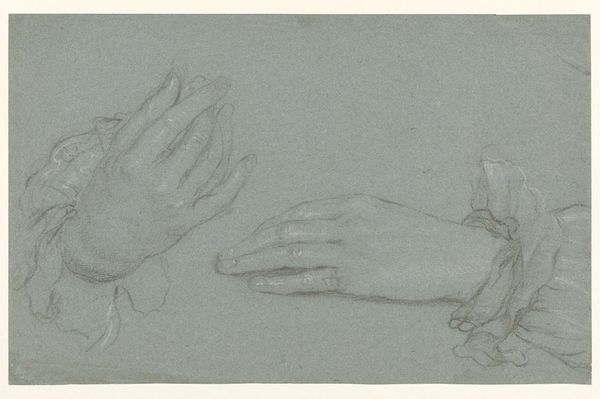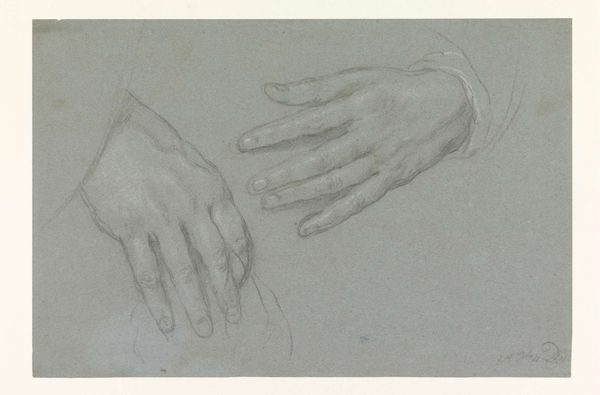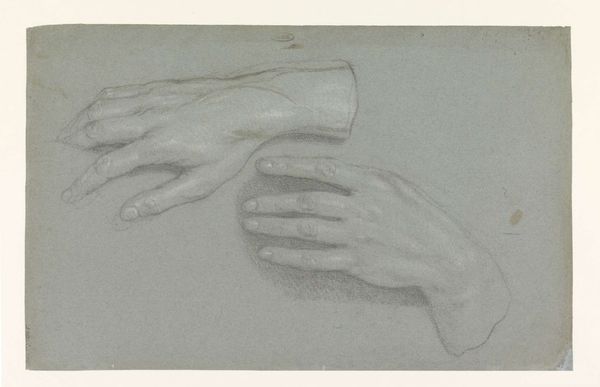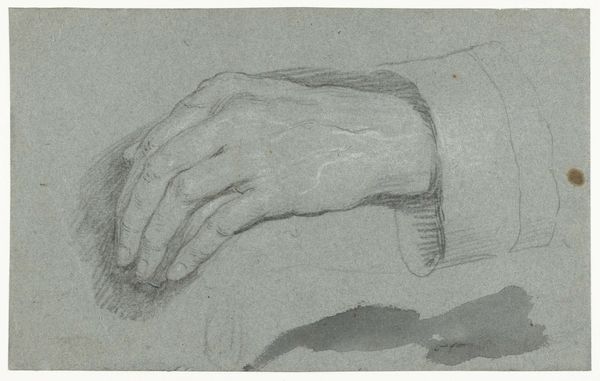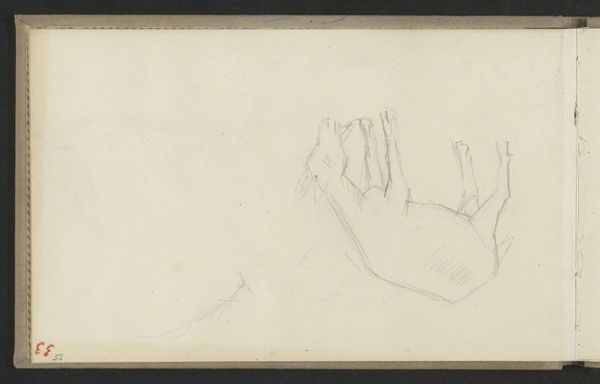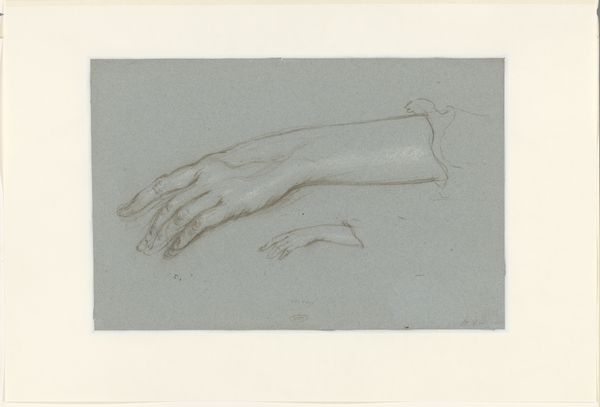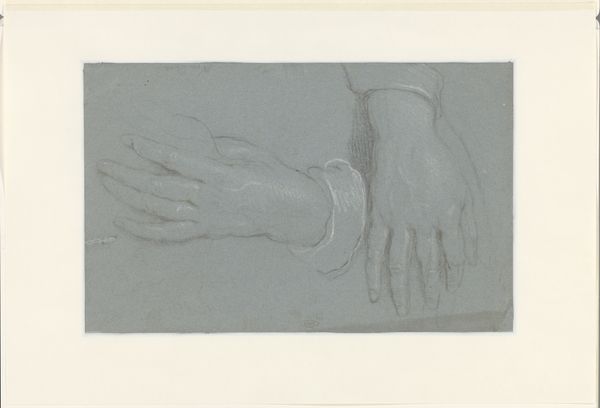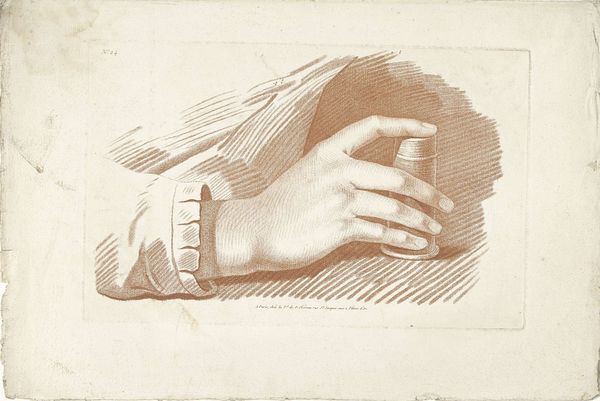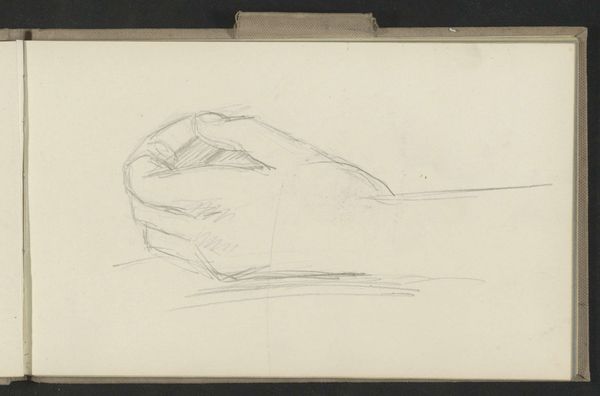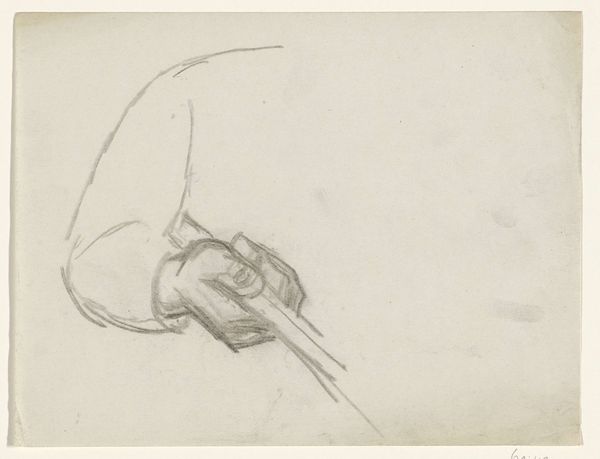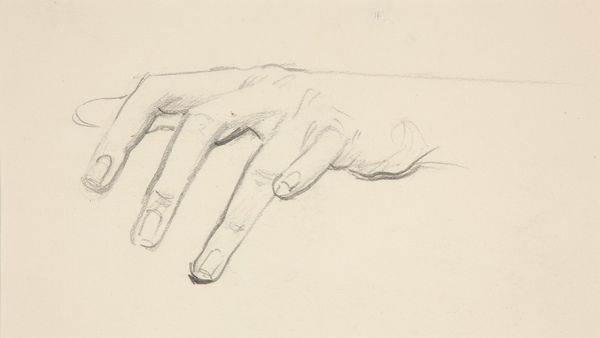
drawing, pencil
#
portrait
#
pencil drawn
#
drawing
#
toned paper
#
light pencil work
#
pencil sketch
#
figuration
#
form
#
11_renaissance
#
personal sketchbook
#
pencil drawing
#
ink drawing experimentation
#
pencil
#
sketchbook drawing
#
portrait drawing
#
pencil work
#
academic-art
#
italian-renaissance
Dimensions: height 283 mm, width 422 mm
Copyright: Rijks Museum: Open Domain
Editor: Here we have Anthony van Dyck's "Study of a Hand, Holding a Book," created sometime between 1610 and 1641. It’s a pencil drawing on toned paper. The delicate lines and soft shading give it such an intimate feeling. What can you tell me about its role within the art historical context? Curator: Well, first notice it's a study, not a finished piece. These drawings offer glimpses into the artist's process, a crucial, but often unseen, aspect of artistic production. How do such drawings get valued in the public sphere and how do they later enter into museums and collections, informing how we conceive of “art?” What are the forces at play that decide that such intimate pieces become a commodity to be exhibited and celebrated? Editor: That's fascinating. So, its significance lies partly in what it reveals about artistic practice. I never really thought about the art market impacting "unfinished" work like this... How does it shape our understanding of art history when museums showcase these more preliminary pieces? Curator: Precisely! When we see these drawings elevated to museum status, it shifts our focus from the grand narrative of finished masterpieces to the smaller narrative of an individual artist's exploration of the human form. How do socio-political factors and dominant ideas around things such as beauty affect what works do end up in museums versus forgotten in drawers? Whose perspectives are prioritized through this process? Editor: So it challenges the traditional idea of what deserves to be seen and celebrated in a museum setting, opening up the definition to process-based pieces. Thank you! I've learned a lot about museums' influence from this conversation. Curator: Indeed! Examining how institutions shape artistic value offers a richer understanding of not just the art itself, but also the power dynamics inherent in art history.
Comments
No comments
Be the first to comment and join the conversation on the ultimate creative platform.
